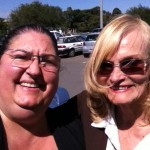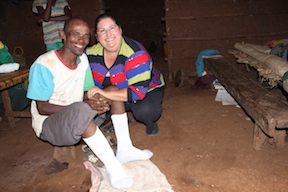This is the second post in a series (see the first one here) based on the the initial nike sb dunk low ae86 cream black purple for sale experience of Mara Klassen, a volunteer in Mossy Foot Project’s state-side office.
Wat’s for Dinner and More…
No that’s not a typo! Doro wat, chicken stew, is an Ethiopian national dish and is typically what’s for dinner when you are invited to an Ethiopian home.
One evening, we were invited to share a meal with Ethiopian friends Yoseph and Ripka. Impressed by the delicious food, I asked Ripka how long it took to prepare. She told me it only took half a day! I realized right then that cooking in Ethiopia is not like my home in America. Ripka had gone to the market, picked out a plump and very alive chicken, and bought it home. She then killed it, cleaned it, and prepared it that morning.
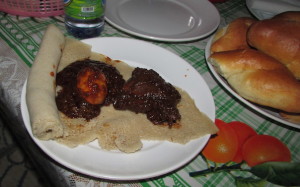 The stew also requires Niter Kibeh (spiced butter) and berbere (a complex red spice mix), both time-consuming to prepare, as well as hard boiled eggs and other ingredients. All of these had to be cooked together slowly over a fire that required constant attention. No microwave dinner here!
The stew also requires Niter Kibeh (spiced butter) and berbere (a complex red spice mix), both time-consuming to prepare, as well as hard boiled eggs and other ingredients. All of these had to be cooked together slowly over a fire that required constant attention. No microwave dinner here!
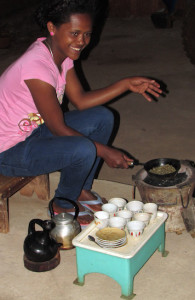 Here is a recipe if you want to try it yourself; it is amazing!
Here is a recipe if you want to try it yourself; it is amazing!
Of course, no Ethiopian meal is complete without coffee. And here again, there’s no instant version. The coffee is roasted, ground, and steeped in a complex and rich ceremony that makes all of life stand still.
Three-hour Church Service
Many aspects of life in Ethiopia seemed timeless air jordan 1 high skyline to me, and one especially joyful experience was participating in a 3-hour church service. The service was in Amharic (national language) or Woilatta (local language).
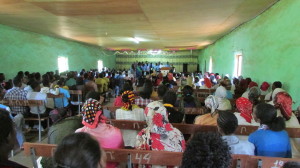 Even though I couldn’t understand anything that was being said, the heart of the people was very clear. During the service, a number of different people spoke (not like our services where we normally have one person deliver a message). Between each speach, the congregation sang. The Ethiopian music was truly amazing and the many voices together made such complex and lovely harmonies.
Even though I couldn’t understand anything that was being said, the heart of the people was very clear. During the service, a number of different people spoke (not like our services where we normally have one person deliver a message). Between each speach, the congregation sang. The Ethiopian music was truly amazing and the many voices together made such complex and lovely harmonies.
Everyone was fully involved in the service, not just those inside the building but also those outside! A powerful external speaker system made sure that anyone outside the building could also enjoy the service.
Bazite, Dr. Barlow’s First Mossy Foot Patient
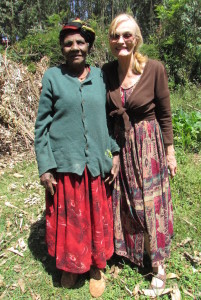 One day, we had an opportunity to meet Bazite, one of the first mossy foot patients that Dr. Nathan Barlow (Sharon’s father) treated.
One day, we had an opportunity to meet Bazite, one of the first mossy foot patients that Dr. Nathan Barlow (Sharon’s father) treated.
Bazite is now an elderly woman, living in her own home (also provided by Dr. Barlow) with her daughter. She was picking Sneakers Draked Viola | Atelier-lumieresShops | Sneakers search engine snappeas—you can see them in her pocket—when we arrived. She was so excited to see Sharon and be able to express her thanks again for the help she had received.
Final Thoughts
I am very grateful for the opportunity to experience first-hand life in Ethiopia and the challenges faced by mossy foot patients. Here I saw how what would seem like a small gift to us—such as a pair of shoes—can mean so much to someone living in different circumstances.
Some people like Megisso Meno have been helped more extensively; but even their life is still extremely simple. His new home, better than many surrounding ones, has dirt floors, no electricity or running water, and the cows join his family inside at night.
I saw people who experienced a beautiful contentment in simplicity that our American mindset has difficulty Adidas Adilette Bonega W , adidas Jacket – HY7242 , Ida-stepShops grasping. I have found after returning home that it takes real commitment and hard work to resist the pressure to want more and more stuff. Ethiopians may be lacking “stuff,” but in their material poverty that are rich relationally…they are warm, affectionate, and hospitable, qualities I will strive to emulate.

